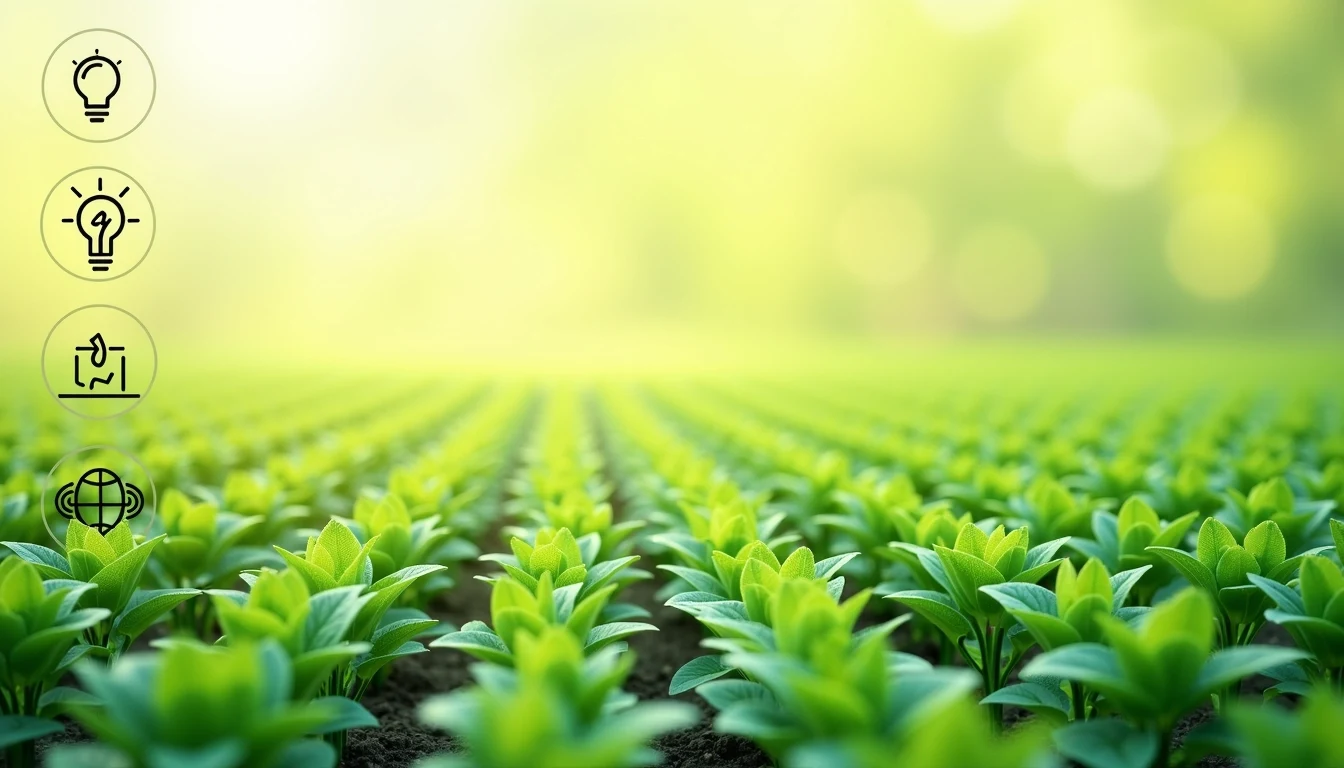Agriculture has always been the backbone of society, but as we move into 2025, we are entering a new era for agriculture—one driven by cutting-edge technology, sustainability, and efficiency. The rise of AgTech is reshaping farming across the United States, offering innovative solutions to age-old challenges. From AI-powered precision farming to sustainable robotics, the future of agriculture is brighter than ever.
The Driving Forces Behind the New Era for Agriculture
Technology is transforming the way food is grown, harvested, and distributed. With a growing global population and unpredictable climate changes, farmers must adopt smarter solutions. Here are the top AgTech trends leading the charge in 2025:
1. AI and Machine Learning in Precision Farming
AI-driven analytics are making farms more efficient by optimizing crop management, predicting weather patterns, and reducing resource waste. With real-time data, farmers can make informed decisions that boost yields while minimizing environmental impact.
AI-powered drones and sensors monitor soil health, moisture levels, and crop growth. These smart technologies allow for precision irrigation, targeted pest control, and efficient fertilizer application, reducing unnecessary expenses and ensuring maximum productivity.
Additionally, predictive analytics help farmers anticipate diseases and adverse weather conditions, allowing for proactive solutions that mitigate risks. AI-based decision-making is becoming a game-changer in agricultural operations, leading to increased efficiency and profitability.
2. Robotics and Automation in Agriculture
From self-driving tractors to robotic fruit pickers, automation is revolutionizing farm labor. These innovations are helping combat labor shortages and ensuring more precise, efficient harvesting methods.
Automated irrigation systems are adjusting water usage based on real-time climate data, reducing waste and conserving resources. Meanwhile, AI-powered harvesters are improving accuracy, reducing damage to crops, and increasing overall productivity.
Farmers are also adopting robotic weed control systems that use machine vision to target and remove unwanted plants without harming crops. This not only reduces the need for chemical herbicides but also promotes more sustainable farming practices.
3. Vertical Farming and Controlled Environment Agriculture (CEA)
Urban farming is on the rise with vertical farms and greenhouse-based CEA systems. By using less land and fewer resources, these high-tech farms are providing fresh, local produce year-round, even in the heart of major cities.
Vertical farms utilize hydroponic, aeroponic, and aquaponic techniques to grow crops without soil, maximizing space efficiency. These systems use significantly less water than traditional farming methods and allow for continuous harvesting cycles.
Controlled Environment Agriculture (CEA) relies on advanced climate control systems to regulate temperature, humidity, and lighting conditions. This ensures optimal growth conditions, leading to higher yields and more consistent food production. As urbanization continues, vertical farming will play a crucial role in feeding growing populations sustainably.
4. Blockchain for Supply Chain Transparency
Consumers are demanding more transparency in their food sources. Blockchain technology is enhancing traceability, allowing buyers to track a product’s journey from farm to table with full accountability.
Blockchain enables secure, tamper-proof records of agricultural transactions, ensuring that food safety standards are met. Farmers can record detailed information about cultivation, processing, and transportation, giving consumers access to real-time insights about the origins of their food.
This transparency builds trust between farmers, retailers, and consumers. It also helps prevent food fraud, reduces waste, and enhances regulatory compliance. As the demand for ethical sourcing grows, blockchain will become a standard practice in modern agriculture.
5. Regenerative Agriculture and Sustainability
Sustainable farming practices, such as soil health restoration, water conservation, and carbon sequestration, are becoming mainstream. AgTech is playing a crucial role in ensuring that these methods are both scalable and profitable.
Regenerative agriculture focuses on improving soil quality through cover cropping, reduced tillage, and composting. These techniques enhance biodiversity, increase water retention, and sequester carbon, helping combat climate change.
Smart irrigation systems are also improving water efficiency, using AI to determine the exact amount of water needed based on environmental conditions. Additionally, farmers are adopting renewable energy solutions, such as solar-powered equipment and biogas production, to reduce their carbon footprint.
What This Means for Farmers and Agribusinesses
As this new era for agriculture unfolds, farmers and agribusinesses must adapt to stay competitive. Embracing AgTech can lead to increased productivity, cost savings, and a more sustainable future. Government incentives and private investments in AgTech startups are also making innovation more accessible than ever.
The adoption of precision farming tools is reducing operational costs and maximizing efficiency. Automated machinery is allowing farmers to focus on strategic planning rather than manual labor. With real-time data analytics, decision-making is becoming more informed and responsive to external challenges.
Furthermore, agribusinesses that integrate blockchain technology can enhance their credibility and appeal to eco-conscious consumers. Transparency and traceability are becoming key factors in consumer decision-making, influencing purchasing behaviors and brand loyalty.
Looking Ahead: The Future of AgTech in the U.S.
The American agricultural landscape is changing rapidly. With continued advancements in AgTech, farmers will have access to smarter tools that help them thrive in an increasingly complex world. By staying ahead of these trends, the industry is poised to not only meet future food demands but also contribute to a healthier planet.
The integration of AI, automation, and sustainable practices is paving the way for a resilient agricultural sector. While challenges such as regulatory frameworks and initial investment costs remain, the long-term benefits outweigh the obstacles. Farmers who embrace innovation will be better equipped to navigate an evolving industry and secure long-term success.
Final Thoughts
The year 2025 is just the beginning of a new era for agriculture. Whether you’re a farmer, investor, or tech enthusiast, the evolution of AgTech presents countless opportunities to be part of something transformative. The future of farming is here—are you ready to embrace it?
The agricultural sector is undergoing a massive transformation, and the advancements we see today are just the tip of the iceberg. As we move forward, AgTech will continue to push boundaries, bringing forth more efficient, sustainable, and profitable solutions. The only question that remains is how quickly farmers and agribusinesses can adapt to these revolutionary
Frequently Asked Questions (FAQ)
1. What is AgTech?
AgTech, or agricultural technology, refers to the use of modern technologies like AI, robotics, blockchain, and IoT to improve farming efficiency, sustainability, and productivity.
2. How does AI impact agriculture?
AI helps farmers optimize crop management, predict weather patterns, automate machinery, and reduce resource waste, leading to increased yields and lower costs.
3. What are the benefits of vertical farming?
Vertical farming allows for year-round crop production, uses less water and land, and reduces transportation costs by growing food closer to urban centers.
4. How does blockchain enhance food supply chains?
Blockchain ensures transparency by providing secure, traceable records of food production, reducing fraud, and enhancing consumer trust.
5. What is regenerative agriculture?
Regenerative agriculture focuses on improving soil health through cover cropping, minimal tillage, and organic composting to enhance biodiversity and sustainability.
6. Why is AgTech important for the future of farming?
AgTech enables farmers to tackle climate change, labor shortages, and food security challenges while making agriculture more efficient and eco-friendly.





